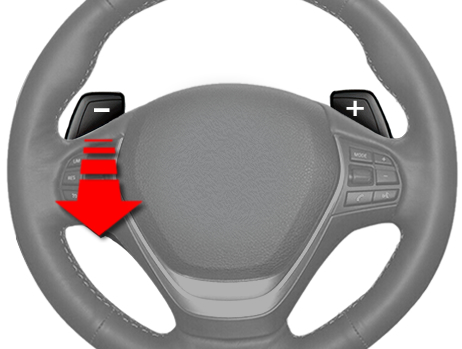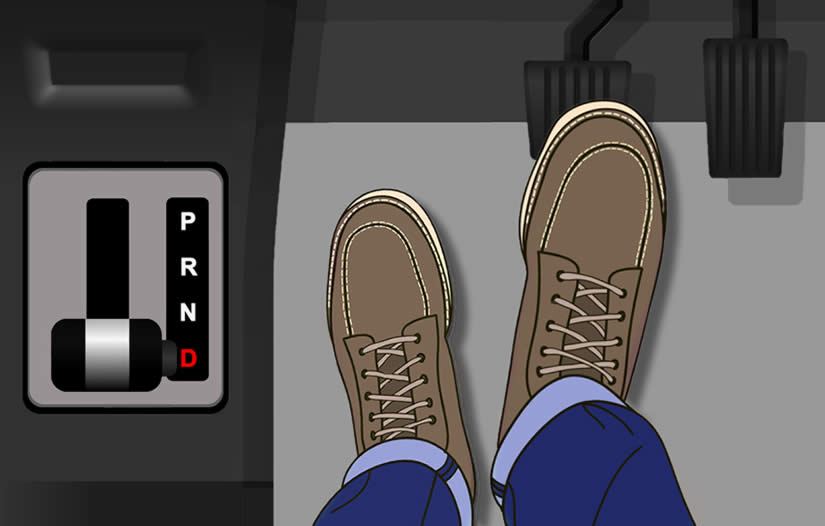If you’re learning to drive in a car that has either a petrol or diesel engine, you’ll need to know what engine braking is and how to make use of it. This tutorial will explain in simple terms the meaning of engine braking, how to best make use of it and why engine braking is beneficial.
Engine Braking Explained
We often associate slowing down a car with the use of a footbrake, but there’s another technique for slowing down and that’s called engine braking. As the name implies, rather than using the vehicle’s brakes to slow down, we use the engine.
If you’ve ever driven a car, then you’ll already be familiar with engine braking. In its simplest form, engine braking occurs when you take your foot off the accelerator pedal.
When you put your foot on the accelerator pedal, combustion occurs and the energy produced forces engine components to move, which ultimately propels the car forward.
When you take your foot off the accelerator pedal, combustion is halted, but all those engine components are still moving simply due to the forward motion, or kinetic energy of the vehicle. Along with a vacuum inside the engine, all these moving components create friction and its both the vacuum and friction forces that cause the car to slow down, hence engine braking.
If you change down to a lower gear while your foot is off the accelerator pedal, the engine components move faster, which creates even more friction, therefore slowing the vehicle down more quickly.
Why is Engine Braking Beneficial
There are benefits in using a combination of your traditional footbrake and engine braking. These benefits include:
Becoming a Safer Driver
In order to correctly make use of engine braking, you’ll need to read the road ahead and come off the accelerator pedal sooner than you would than if you were to rely on brakes alone. By increasing your level of observation, anticipation and planning, it’ll make you a safer driver.
Using Less Fuel
When your foot isn’t pressing on the accelerator pedal, you’re not using any fuel. Since engine braking requires you to remove your foot from the accelerator pedal, your tank of fuel will go further.
Less Brake Wear
Over time, your car’s brake pads and discs wear down and require replacing. By using a combination of engine braking and your car’s traditional brakes, your brake pads and discs will last longer.
Driving Downhill
If you live in an area with steep hills, you’ll certainly need to make use of engine braking. When driving down a steep hill, you need to keep your car’s speed under control. Relying only on your brakes can cause them to overheat and fail.
This is called brake fade. When travelling downhill and by keeping the car in a low gear, you’ll be making use of engine braking and taking some on the load off the brakes. See how to drive downhill in an automatic car for further information.
How Do You Use Engine Braking?
Though a combination of your car’s traditional brakes and engine braking is beneficial, it’s important to understand that your car’s traditional brakes must remain the primary source of stopping your vehicle.
To make use of engine braking, you’ll need to anticipate traffic conditions ahead. For instance, a traffic light that is changing to red up ahead. Rather than brake only once you reach the queue, take your foot off the accelerator pedal and cover the brake in preparation to use it. This will begin engine braking. If you’re driving a manual car, you can either block gear change, or sequentially change down gears to increase the benefit of engine braking.
If you’re driving an automatic, the gearbox will change down gears for you automatically. However, if your automatic has the paddle gear shifters at the steering wheel, you can select ‘manual mode’ which allows you to change gears manually using the paddle shifters. You can then change down gear sooner than your gearbox may do so.

Once you near your stop, you can begin to gently use your footbrake. However, you’ll often find that by using this technique by slowing down a little sooner, the queue will start moving and you can continue without needing to stop. This not only reduces brake wear but by not having to stop, you’ll save fuel too.
There we go, engine braking is a simple technique that makes us safer drivers by anticipating the road ahead, helps us to save fuel and also reduces brake wear.
